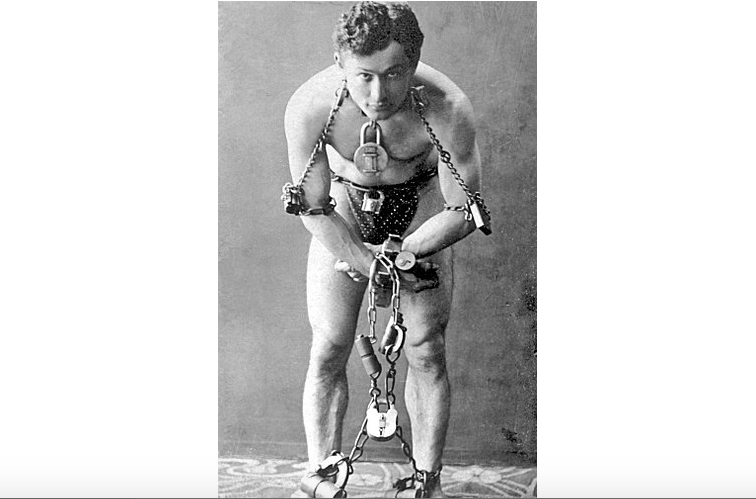“My heart is in this work, for it is not a question of “Will we lose.” We must win, and that is all there is to it.”
Harry Houdini is one of the world’s best-known illusionists, escape artists, and magicians. He managed the incredible feat of making a full-grown Asian elephant disappear in front of a live audience of over 5,000 people in the Hippodrome of New York City on January 7, 1918. It was one of his most spectacular performances.
But first and foremost, Houdini was an American patriot. He loved his adopted country so much that he did all in his power to help in the war effort during WW1.
He instructed American soldiers on how to escape captivity by teaching them how to pick handcuffs. He was also an avid seller of US Liberty Bonds that funded the war effort, and he toured the country performing in military camps.
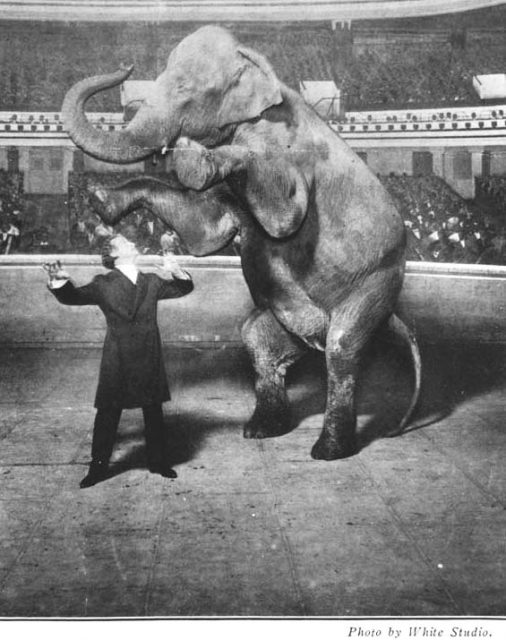
Moreover, he used the Hippodrome in NYC as a staging post for his active support, as evidenced by the words of his letter to the then manager R. H. Burnside, convincing him of the merits of his free performances there:
“My heart is in this work, for it is not a question of “Will we lose.” We must win, and that is all there is to it.”
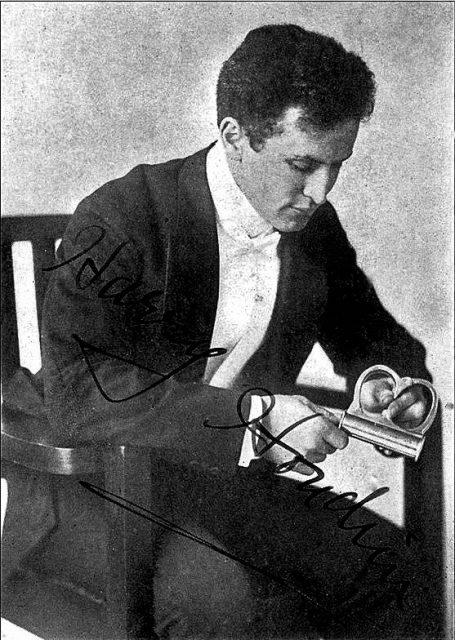
Erik Weisz, aka Houdini, was born in Budapest, Hungry, as one of seven children on March 24, 1874. When he was four years old, the family moved to the USA where they first settled in Appleton, Wisconsin. In the US, his name was changed to the German spelling of Ehrich Weiss.
Name changes were a part of his life. Later, after the family moved to New York City, he became Harry Houdini after reading the biography of Jean-Eugène Robert-Houdin, the French magician. It heralded the start of his career as a magician who would bedazzle audiences across the globe with amazing illusions and daring escapes.
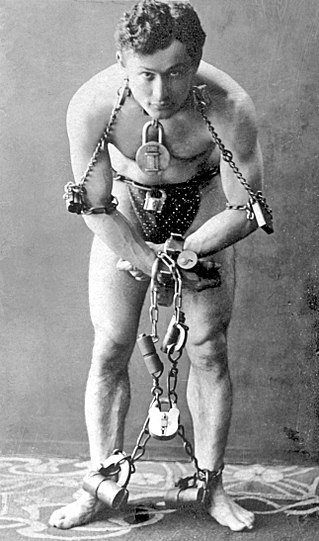
When the United States declared war on Imperial Germany on April 6, 1917, Houdini was jolted into a fervor of industriousness
One of the first things he did was obtain unswerving allegiance from the members of the Society of American Magicians (SAM) which he had founded in 1902. One day after the American declaration of war, he introduced a resolution that stated the following:
“The members collectively and individually do hereby tender their loyalty to the President of the United States of America and express desire to render such service to the country as may be within their province.”
The resolution was sent to President Woodrow Wilson. Once he had the backing of his fellow magicians, he started getting them involved in the war effort. It is nothing short of spectacular that his call to action was taken up with patriotic zeal.
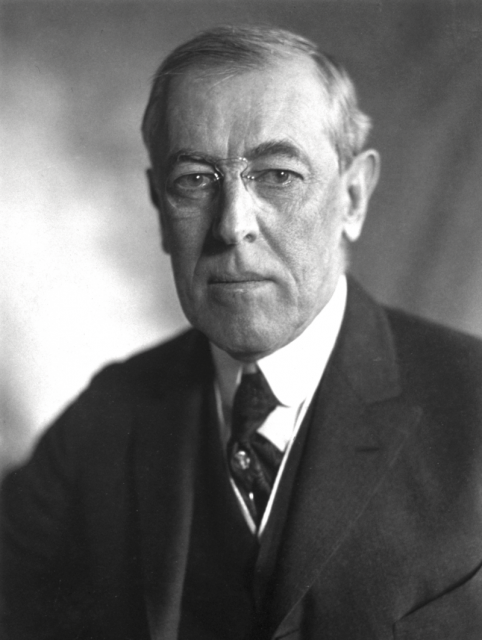
Washington magician Archie Engel became a secret agent for the Treasury Department. Fellow member Dr. Charles Mendelsohn joined the cryptography department and helped decipher German codes. New York SAM member Dr. Maximilian Toch became the head of the US camouflage division.
These men, alongside other magicians, supported the development of the signature gray coloring of the US Navy vessels.
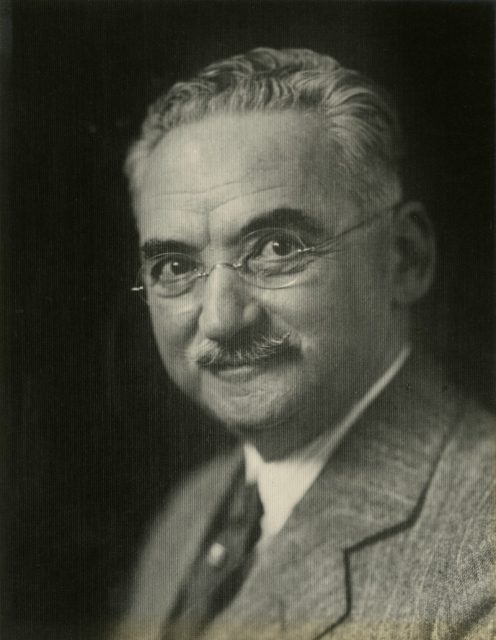
Houdini the “Handcuff King” started touring the country and training soldiers
Houdini’s many years of practicing the arts of picking handcuffs and freeing himself while submerged and bound did not only make him wealthy and famous but also made him the perfect coach.
Eager young men who were due to be sent off to the carnage of the Western Front in France listened to Harry Houdini with respect, awe, and almost reverent attention.
“The reason people drown on a sinking vessel is because they lose all sense of direction,” explained Houdini to the group of soldiers in his audience on the promenade floor of the cavernous Hippodrome in New York.
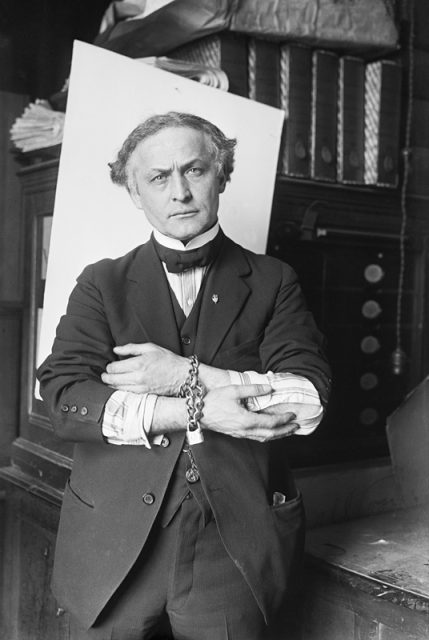
Part of the men’s rigorous training was a course on how to escape from a torpedoed ship. Who better to teach them than the master of escapology? His main message was that nobody should panic. He explained that when a person was submerged, they should slowly allow the body to rise up until they could touch the side, floor, or deck of the vessel.
When Houdini then asked for a volunteer, every hand was raised. A short while later, the hapless young man who had been chosen was all trussed up like a turkey. “I would venture to say that this gentleman is not going anywhere,” Houdini said, and everybody laughed.
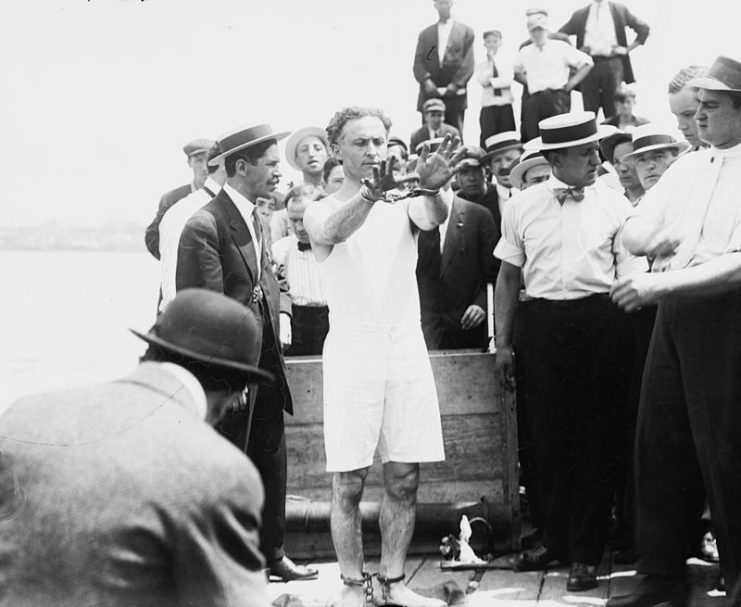
In a final step, the wily magician produced a set of German handcuffs. To further mirth, he explained the shackle’s excellent quality and proceeded to demonstrate how to free oneself.
It did not take long for Houdini to realize that his new activity would take up much more of his time than he’d anticipated. So, without a second thought, he canceled all of his performances and dedicated his time to raising money for the war effort as well as entertaining the troops and the families they had left behind.
It was the beginning of a wild dash from theatre to theatre and camp to camp that would take more than a year.
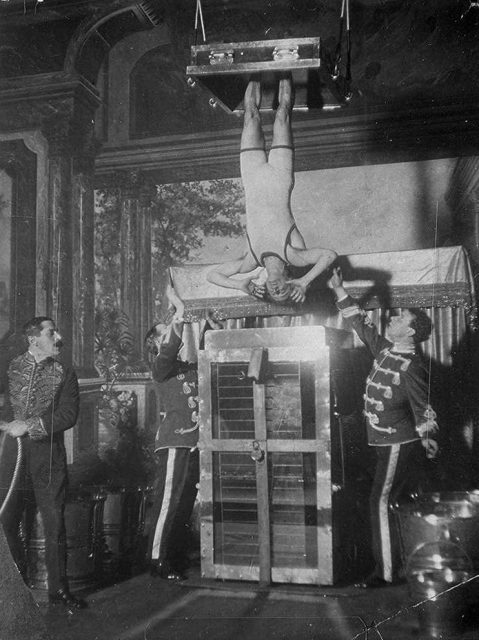
He literally sold the shirt off of his back
The man’s efforts knew no limits. The moment the US Secretary of the Treasury, William McAdoo, started issuing war bonds, Houdini morphed into one of the most successful and enthusiastic fundraisers.
He even went so far as to sell the shirt off of his back when a man in the audience of one of his shows offered to buy $1,000 worth of bonds if Houdini could free himself from his shirt in less than 30 seconds. The man then offered another $1,000 to buy the shirt.
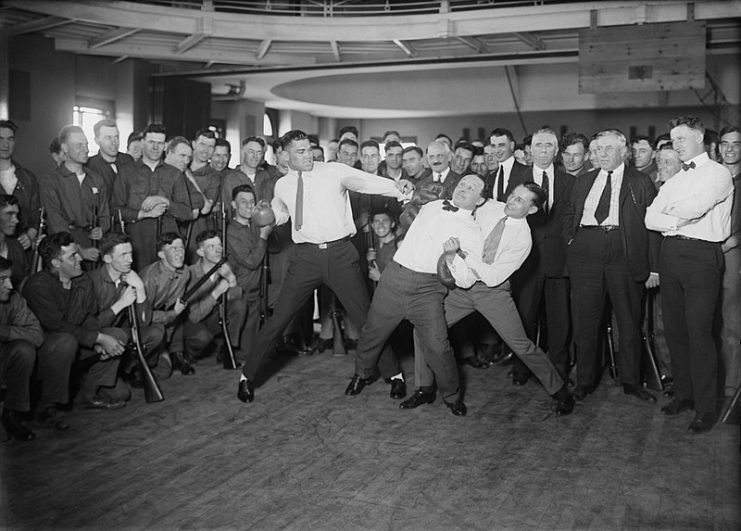
Houdini racked up Liberty Bond sales of over one million dollars within a year. At the same time, the show must go on. During his shows for the troops, he performed a simple disappearing coin trick using $5 gold pieces which he would then give to the young men heading to Europe as a token of his esteem.
Read another story from us: Wacko But True: The Baboon Who Served in WW1
In total, he gave away $7,000 in this manner — that is close to $130,000 in today’s money.
His charity was boundless. In total, the magician sacrificed $50,000 in lost salary over a year on top of his own expenditure for the war effort. It was his way of helping. It goes without saying that, had he been younger, he would have joined up and shipped off to Europe to fight the Germans in a heartbeat.
